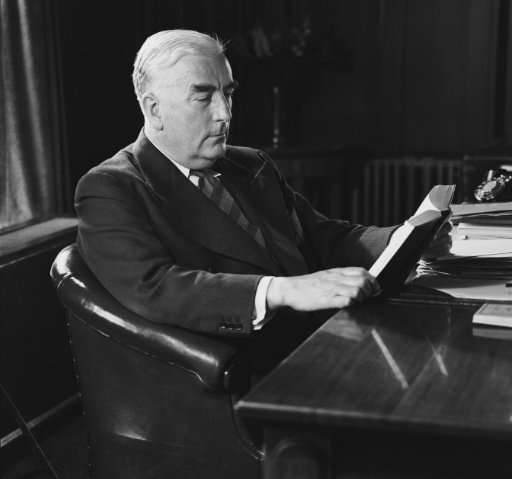On this day, 3 October 1952, Britain explodes her first ever nuclear weapon. The bomb was detonated inside of a frigate anchored in a bay of the uninhabited Montebello Islands 120 kilometres off the coast of Western Australia. With the success of ‘Operation Hurricane’, Britain thereby became the world’s third nuclear power, joining the United States and the Soviet Union. This test had been authorised by the Menzies Government in the context of the Cold War and Australia’s long-standing position as an integral part of the British Empire then Commonwealth. Two more tests would follow in 1956, leading to long-term environmental consequences for the area.
Though British scientists had been heavily involved in the Manhattan Project which produced the world’s first atomic bomb, after the War ended America ceased nuclear collaboration with Britain over security concerns. Unwilling to accept relying on the United States for protection in the new nuclear age, and also jealously guarding Britain’s rapidly receding status as a super power, the new Labour Prime Minister Clement Attlee decided that his country should ‘go it alone’ and develop their own weapons. This decision was made with the utmost secrecy and was not revealed to Cabinet, and when Attlee approached Menzies about hosting the tests the latter likewise agreed without referring the matter to the Australian Cabinet. Self-evidently, the United Kingdom did not have any sites remote enough to be appropriate for conducting such tests and that is why they reached out to Australia.
Arrangements were made for the British and Australian Governments to announce the plan for the test simultaneously on 18 February 1952, but through a mishap British cables reached the Australian press before the local announcement was made. Minister for Supply Howard Beale was put in a position of much embarrassment, as he had previously denied rumours that a test was being planned as he had not been let in on the secret.
When news of the successful test itself broke there was bi-partisan rejoicing, with Opposition Leader H.V. Evatt boasting that Britain and the British Commonwealth had long led the world in the field of atomic science. An eye-witness of the test described ‘a brilliant orange flash, followed by a boiling cloud of smoke, dust and water, shooting up into the sky with dramatic speed. The typical “mushroom” was soon distorted by the high winds in the upper levels.’
In the 1980s the Hawke Government’s Royal Commission into British Nuclear Tests in Australia would produce a scathing report which criticised Menzies for failing to take the issue to Cabinet and for choosing a site which the Commission considered insufficiently safe. However, Menzies’s biographer A.W. Martin has argued that the report is largely anachronistic, because it fails to fully appreciate the grave security concerns of the time, the requirements of secrecy, Australia’s sense of itself as British, and the limitations of contemporary knowledge which could not have predicted the extent of the fallout.
These circumstances mean that it is questionable to affix blame to decision makers and scientists based on what the benefits of hindsight have revealed. Nevertheless, the negative effects were significant. Indigenous Australians on the mainland were unknowingly exposed to radiation from the tests, as were observers. To this day, the islands remain a radiation risk more than 60 years after the last test was conducted, with visitors advised to spend no more than an hour near the test sites.
Further Reading:
A.W. Martin, Robert Menzies, A Life: Volume 2 1944-1978 (Melbourne University Press, 1999).
HMAS Hawkesbury Reports of Proceedings, October, 1952.
Justice J.R. McClelland, Report of the Royal Commission into British Nuclear Tests in Australia, Parliamentary Paper No.482, 1985.
Further Listening:
Wayne Reynolds, ‘We have this deterrent’ Australia’s Nuclear Ambition — Robert Menzies Institute
Sign up to our newsletter
Sign up for our monthly newsletter to hear the latest news and receive information about upcoming events.


